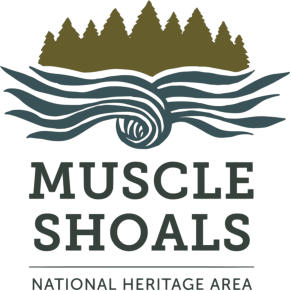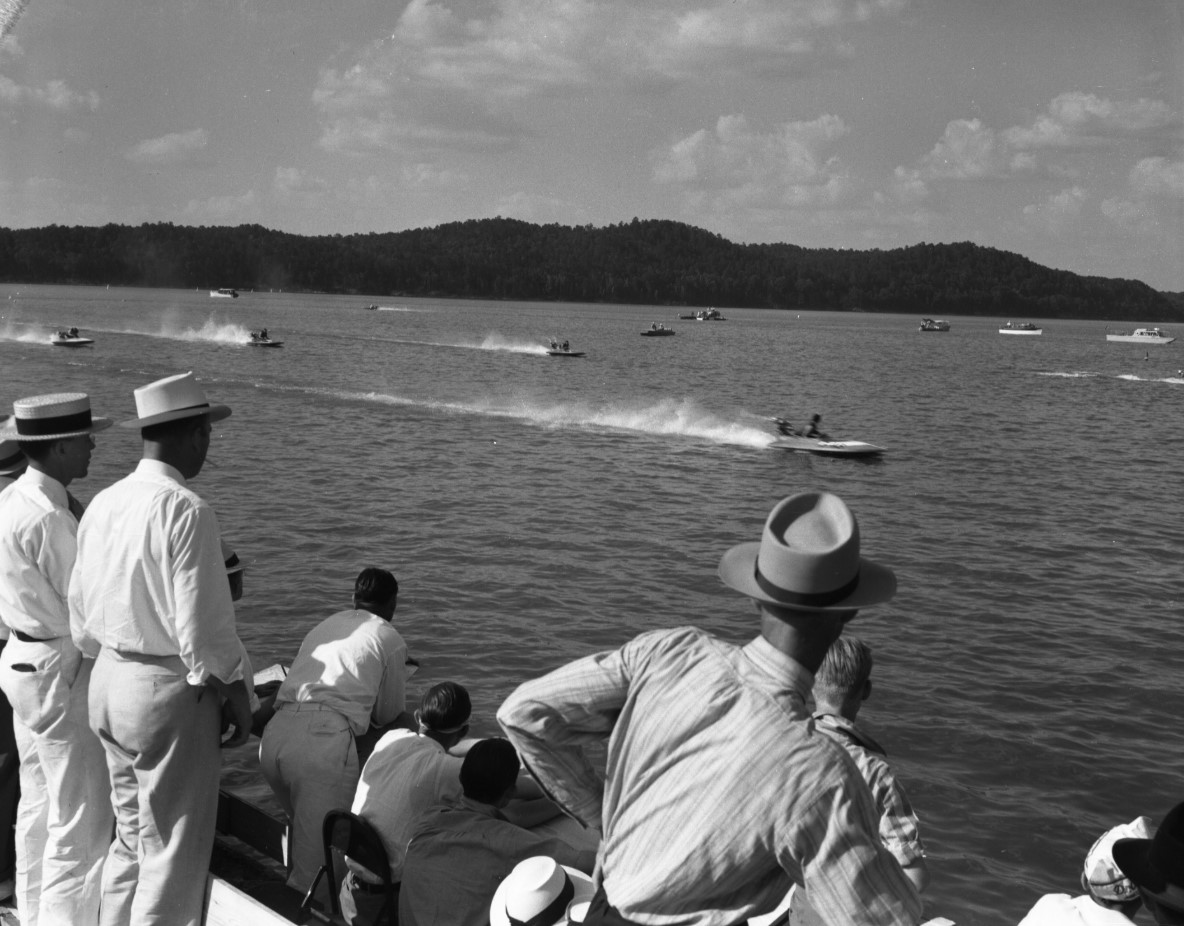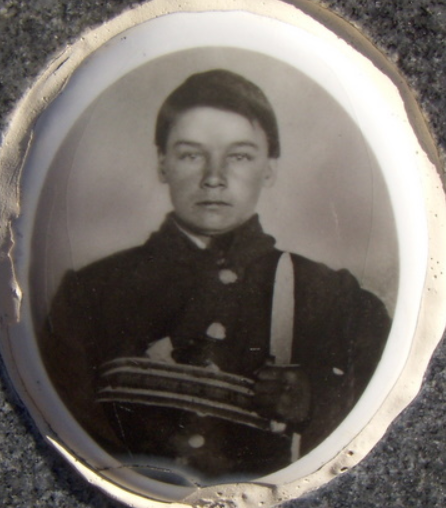By Carrie Crawford
MSNHA director
Growing up in New England has made me very partial to fall. While we certainly have fall in Alabama, it doesn’t quite compare to a New England fall (sorry!!). It is hard to embrace the season (wool sweaters, scarves, hot apple cider, etc.) when it is still 85 degrees outside. When we found out that the Upper Housatonic Valley National Heritage Area was hosting the fall Alliance of National Heritage Areas meeting, I was thrilled. The UHVNHA covers northwestern Connecticut’s Litchfield Hills and western Massachusetts’s Berkshire Mountains, one of my favorite New England landscapes to visit. TJ, Becky and I set off for the hills on Oct. 2.
The goal of the spring and fall ANHA meetings is to allow host NHAs to share some of the work they are engaged in with representatives from other NHAs, the National Park Service & and other partners from across the country. I always leave these trips with so many ideas to bring back to the MSNHA. Getting to see communities & learn about their history through the eyes of an NHA is one of the best ways to explore a region. Not only do you get to travel around with experts on the history, culture & natural resources of the NHA but you also learn about how projects came to fruition (and sometimes about those projects that did not come to fruition), how communities come together to share their history (and the conflicts inherent in this action) and how the history of a place can inform its future.
Because heritage areas are filled with sites of historical, cultural, and natural significance, it can be difficult to decide what the show to attendees — you just can’t see everything in just a few days. One of the easiest ways to organize a meeting is by choosing a selection of sites connected to each of an NHA’s themes that are outlined in their management plan. The UHVNHA’s themes are Creating a Cultural Center, Connections to the Land, Cradle of Industry and the Pursuit of Freedom and Liberty. Host NHAs also select projects that demonstrate their impact across their region and highlight the power of partnerships.
Our adventures were centered in the town of Stockbridge, Massachusetts. We stayed at the historic Red Lion Inn, which is one of 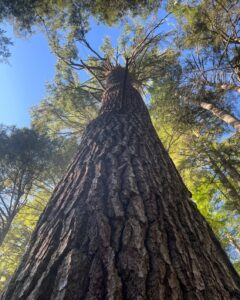 the Historic Hotels of America, a program of the National Trust for Historic Preservation. If the stories are true that the first tavern opened on the site of the Red Lion in 1773, people have been eating, drinking and sleeping on the corner of Main & Pine streets for 250 years. Five presidents have stayed in the inn. While it is rumored to be haunted, we didn’t meet any ghosts…we don’t think!
the Historic Hotels of America, a program of the National Trust for Historic Preservation. If the stories are true that the first tavern opened on the site of the Red Lion in 1773, people have been eating, drinking and sleeping on the corner of Main & Pine streets for 250 years. Five presidents have stayed in the inn. While it is rumored to be haunted, we didn’t meet any ghosts…we don’t think!
ANHA meetings typically encompass visits to museums, historic sites, local businesses and some kind of adventure that we call the Flying Monkey. In the UHVNHA we had an excellent hike on the Ice Glen Trail, which takes hikers through a glacial ravine filled with boulders, mosses, ferns and caves. We also saw the Massachusetts State Champion White Pine tree at the end of the trail! TJ, Becky and I climbed up to a lookout tower on the Laura Tower Trail. We got an amazing view of the Berkshires from the top. The Laurel Hill Association manages the trails – and others around Stockbridge.
On the first of our travel days, we visited Great Barrington, where we explored the Great Barrington Housatonic River Walk. This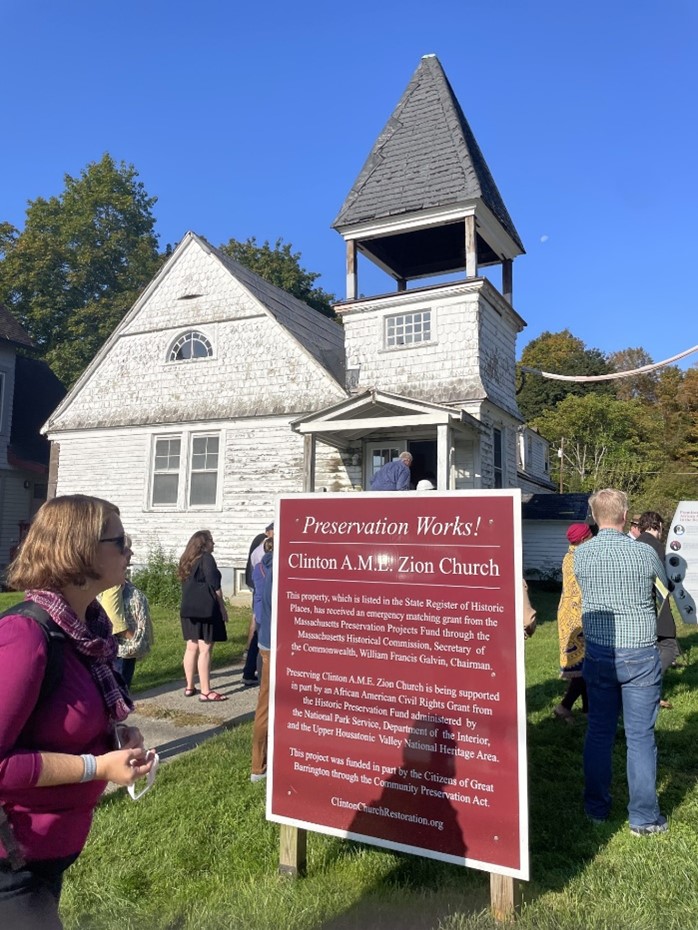
project, which has engaged hundreds of volunteers, not only has created a nice walking trail along the Housatonic River but also has helped to restore the shoreline of the once heavily polluted river. Today over 200 species of native plants are thriving in the River Walk’s ecosystems. We also visited the DuBois Freedom Center, which will be housed in the Clinton A.M.E. Zion Church and will honor the work & legacy of W.E.B. DuBois. I’ve heard about the ongoing restoration project for many years so it was interesting to see it first-hand. When complete, the center will also share local African American history and include a performance space, exhibits & community spaces. We then set off for the studio of Daniel Chester French, the sculptor of the Lincoln Memorial (and a relative of mine!). Chesterwood is a historic site of the National Trust for Historic Preservation. While the site does showcase French’s work & history, it is also a thriving center for art today, hosting performances, exhibits, music & literary events. Our next stop was Ventforth Hall, where we learned about life in the Berkshires during the Gilded Age and the challenges of restoring the mansions New York’s wealthiest built. The most exciting part of this stop for TJ, Becky and I? Finding bear scat in the front lawn! We were hoping for an actual bear sighting but this is as close as we got all week. Our last stop was The Mount, author Edith Wharton’s home. Wharton has long been one of my favorite authors and it was a treat to see the beautiful light-filled home that she designed.
After our business meeting on Wednesday, we headed north to Mount Greylock, the highest point in Massachusetts. The Appalachian Trail runs across the top of the mountain as well. Before we headed out on the trail, we explored the Mount Greylock Veterans War Memorial Tower (which is also a mountain top light house!). We also got to see a parasailer jump off the edge of the mountain! We hiked on the AT (we saw wild turkeys) and then enjoyed a wonderful meal at Bascom Lodge, a CCC 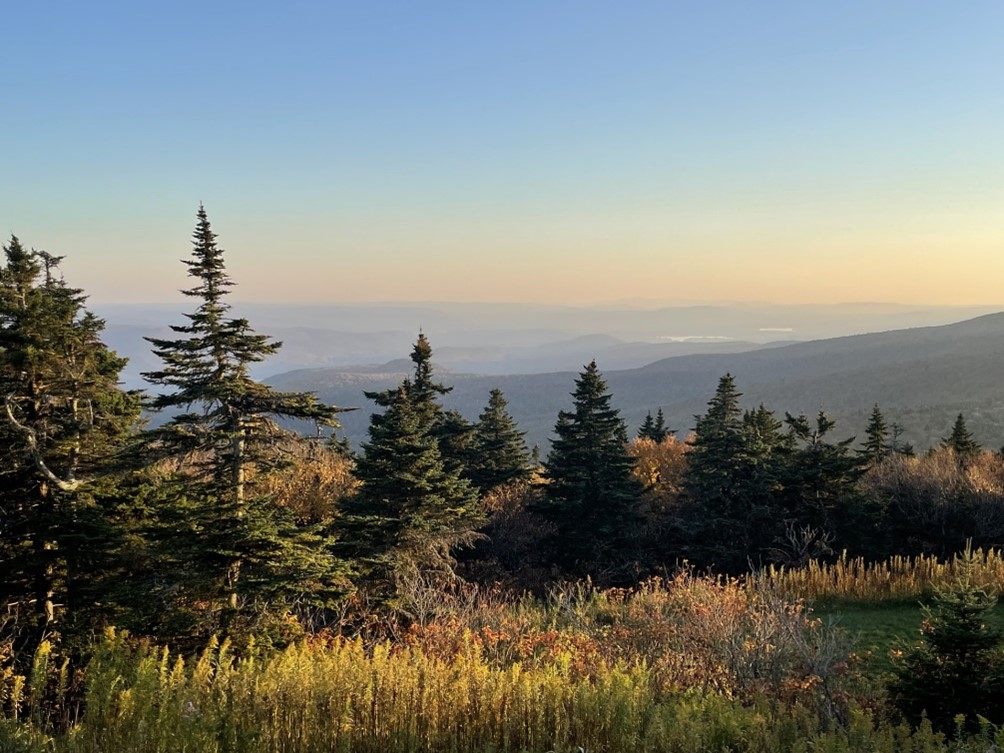 constructed lodge built of local stone & red spruce.
constructed lodge built of local stone & red spruce.
Our last day together started with a visit to the Hancock Shaker Village in Pittsfield. The village interprets the history of the Shakers, a “religious order whose members believe in pacifism, celibacy, and communal living.” The site highlights the significant contributions the group has made in the areas of art, architecture, craftsmanship, music, government, agriculture & commerce. One of my favorite parts of our visit was exploring the round stone barn that the Shakers built in 1826 (it burned in 1864 and was rebuilt) to make feeding their cows easier. The Shakers unloaded hay from wagons into a central storage area on the top floor of the barn. One level down, the stanchions for f50 or so cows opened into the central area so they could access the hay. The cow’s manure was pushed into the bottom level of the barn, where it broke down to be used as fertilizer on the fields.
Our next stop was the Berkshire Botanical Garden. If you know Becky, TJ and I even a little, then you know that we all love plants! Exploring the garden on a warm fall day was quite the treat. We also made sure to support the garden by buying some sauces and dressings made with ingredients grown on site – it is always important to contribute to the local economy on these adventures.
dressings made with ingredients grown on site – it is always important to contribute to the local economy on these adventures.
Our final stop in our ANHA adventure was the Norman Rockwell Museum. Rockwell spent the last 25 years of his life in the Berkshires. His studio was located in downtown Stockbridge. The museum original was located in downtown in the Old Corner House but moved to its current location in 1993. In walking through the museum’s collection, which includes Rockwell’s iconic series “The Four Freedoms,” we were surprised to learn that many of the pieces we were familiar with from the cover of “The Saturday Evening Post” were large paintings – not small illustrations as we had thought. From the museum, it was a short walk down to the Upper Housatonic River, where we ended our visit to the museum. Just like in the MSNHA, the river was always in the background of our travels around the UHVNHA.
If you’ve ever wanted to experience New England in the fall, we all recommend making a trip to the Berkshires for some leaf peeping, apple cider donuts & walks in the woods! ###
